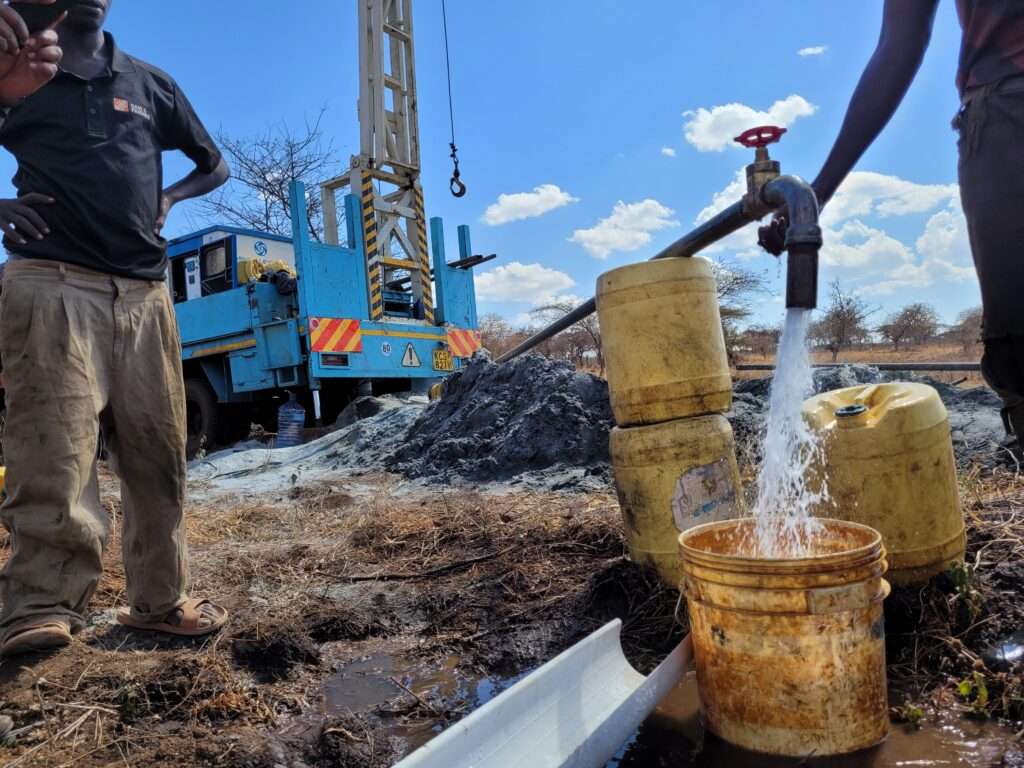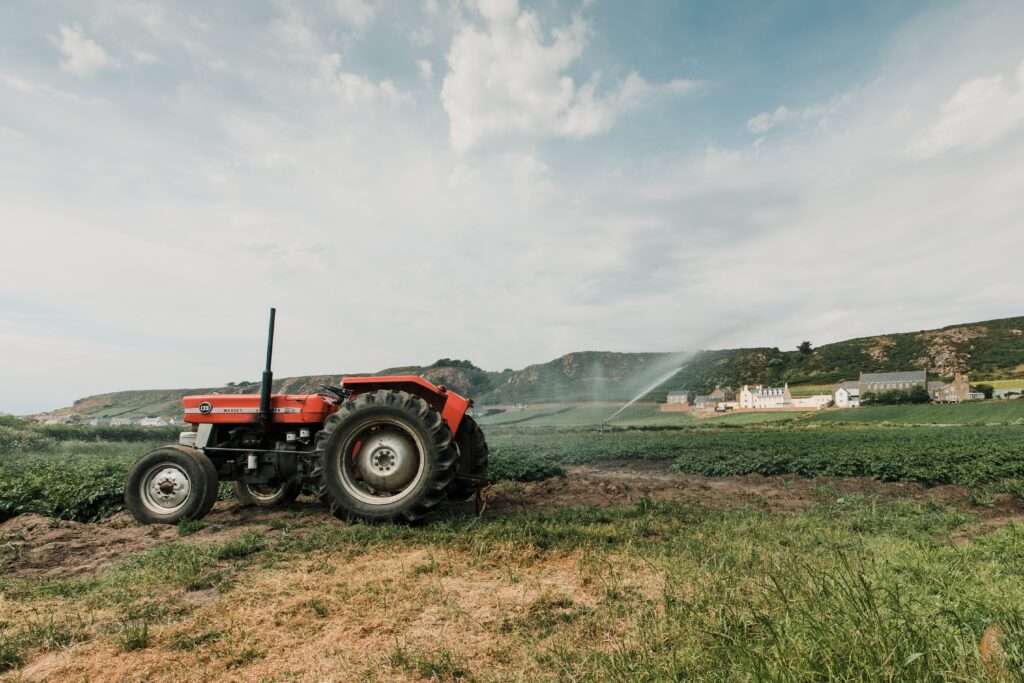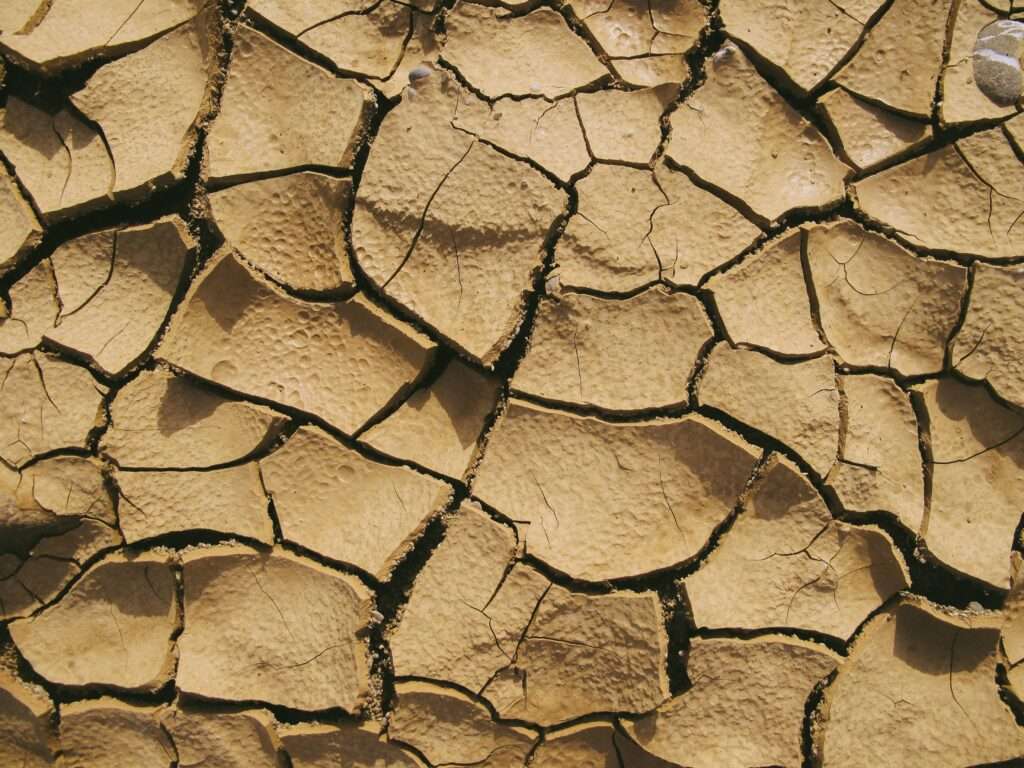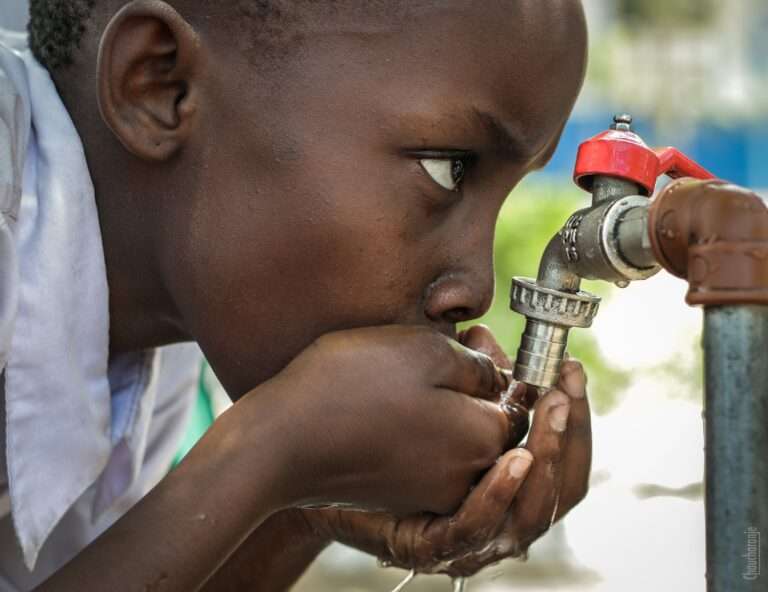How Much Water Can a Borehole Produce Per Day?
How much water can a borehole produce per day? It is a question everyone needs an answer to.
A borehole is a newly created entry into Earth’s underground aquifers, like a guardian in the water quest.
It promotes the cause of drawing groundwater as a drilled well, revealing a hidden reserve beneath the crust. It’s an artificial key to unlocking the Earth’s hidden treasures and maintaining a consistent water supply.
Borehole water supply is essential, especially in dry places with scarce surface water.
It’s a consistent and trustworthy lifeline, saving communities from the unpredictability of rainfall and the scarcity of surface water.
Boreholes serve as sentinels, providing a continuous flow that transforms into a dependable oasis, a steadfast answer in the face of water scarcity uncertainties.
Also read >>> The Best Hybrid Solar Inverters for You
Table of Contents
Factors Affecting Borehole Water Production
Geographical Location and Geological Conditions
The geological tapestry beneath our feet directs the fate of borehole water production.
Diverse formations in various locations perform a symphony of water abundance, describing the hydrogeological story woven by the intimate relationship between geography and hydrogeology.
The geological narrative etched under the surface guides a borehole’s potential, transforming each drill into a storyteller and revealing aquifer mysteries.

It pays homage to Earth’s intertwined ballet, a beautiful tale defining the subterranean water landscape and exhibiting the delicate choreography between nature’s characteristics and hydrological miracles.
Depth and Size of the Borehole
The depth and size of a borehole take centre stage as hydraulic choreographers in the subterranean ballet of water production.
Deeper drills become maestros, plunging into aquifers and creating a water-yield crescendo.
Meanwhile,
The borehole diameter is a stage manager, directing the extraction process’s efficiency. Each plunge into the depths and modification in size helps the flow of water extraction, creating a harmonious symphony beneath the earth’s surface.
Aquifer Characteristics
Aquifers, those hidden subsurface reservoirs, are home to the elixir of life.
The key to a borehole’s vitality is contained inside its geological embrace.
These underground gatekeepers’ permeability and porosity regulate the ballet of flow rates, revealing hydrogeological mysteries that orchestrate a borehole’s productivity. Consider them Earth’s hidden alchemists, determining the water potion that each borehole can distil.
Like brushstrokes on a painting, their properties offer a detailed picture of underground water dynamics, illustrating how the permeable and porous geological canvas influences the fluid poetry that nourishes life above ground.
Pumping Capacity and Efficiency
Pumping prowess is at the heart of borehole water production.
The pumping system’s efficiency reigns supreme here in the regular pulsing of hydraulic vitality. Consider the coordinated heartbeat of extraction, where the pump’s precision and power orchestrate the water quantity taken from the underground depths.
This hydraulic heartbeat, similar to the human body’s circulatory system, determines the lifeblood of water flow, determining the essence of a borehole’s productivity. This cyclic hydraulic dance directs the life force that rushes from the earth’s bosom.
Also, read >>> The Best Water Pressure Booster Pump
Estimating Water Yield from a Borehole
The Concept of Yield and Specific Capacity
Two crucial parameters, yield and specific capacity, take centre stage when predicting water yield from a borehole. Yield encapsulates the core of a borehole’s generosity—the volume of water it readily offers—and is rich with hydrological importance.
It’s a sign of dependability, a guarantee of plenty.
On the other hand, specific capacity is a more complex statistic that acts as a hydrogeological detective. It determines water extraction efficiency by evaluating volumetric output per unit drawdown.
In layman’s words, it reveals how much water a borehole can extract from the depths without jeopardizing its hydraulic strength. Yield and specific capacity work together to create a vibrant hydrological panorama, reflecting the potential and efficiency of a borehole’s aqueous generosity.
Techniques for assessing Borehole Yield
Pumping Tests and Measurements
Pumping tests serve as the litmus paper in the laboratory of aquifers in the hydrological search to determine borehole yield.

These tests, similar to scientific litmus, gently assess a borehole’s hydraulic capacity. Hydrogeologists perform a regulated extraction dance, pumping the well in a repetitive pattern. Through this hydrological ballet, they decode the aquifer’s secrets, unravelling the intricacies of the borehole’s yield.
It’s a thorough investigation, a scientific duet that reveals the hydraulic prowess concealed beneath the Earth’s surface. It provides a tangible measure of the borehole’s potential to quench our need for water from the subterranean depths.
Water Level Monitoring
The repetitive pulse of its heartbeat assesses the vitality of a borehole—the water level.
It’s a live, throbbing thing teeming with knowledge.
We engage in a hydrological discourse through regular monitoring, revealing this subterranean relationship’s subtle ebb and flow. This ongoing observation provides insight into the dynamic interaction between the aquifer and the borehole.
Each rise and fall of the water level tells a story of hydrogeological complexities, allowing us to read the silent language of the Earth’s depths and comprehend the fluid dynamics that shape the borehole’s ability to release water.
Historical Data and Local Experiences
Historical information and regional legends intertwine stories about water yield with the rich tapestry of hydrogeological knowledge.
These aren’t just recordings; they’re borehole behaviour logs. Past performances prelude future projections, producing a detailed story of aquifer dynamics. Each submission becomes a page in the annals of water extraction, a live storybook consulted by hydrogeologists.
By delving into these sagas, we unearth the wisdom inherent in the Earth’s hydrological history, enriching our grasp of how boreholes respond to subtle indications of the past and moulding our foresight for sustainable water management.
Average Water Production Rates
Standard Classifications Based on Borehole Yield
Like celestial body orbits, water production rates correspond to categories that govern hydrological navigation.
Standard parameters classify boreholes as low, moderate, or high-yield, much like constellations in the cosmos. This celestial map is more than a reference; it’s a vital tool for water management throughout the hydrological universe.
It defines the aquifer terrain and provides a road map for anticipating and managing water resources.
Comprehending these standardized categories gives water stewards a celestial compass. This allows them to traverse the hydrological cosmos accurately and assures sustainable extraction aligned with the dynamic dance of subterranean water abundance.
Variations in Water Production Rates
The constellations on the hydrogeological canvas are not fixed. Borehole water production rate variations present a dynamic portrait impacted by geological anomalies and human activities. It’s a live tapestry with shifting water abundance.
Geological quirks shape the ebb and flow like artistic brushstrokes. Human manipulations, like invisible hands, complicate this hydrological masterpiece.
The canvas isn’t static; it’s a living, breathing story.
Understanding the subtle dance of geology and human influence is essential for decoding differences in water production rates. Each borehole is a unique star in the hydrogeological cosmos, contributing to the ever-shifting celestial choreography of underground water dynamics.
Factors Leading to High or Low Water Production
The delicate balance of water production depends on several factors, including geology, aquifer characteristics, and human activity.
Geology shapes the terrain, aquifer peculiarities choreograph the dance, and human actions add complexity. Consider it a balancing act on a hydrogeological tightrope. Like the ground beneath our feet, the geological foundation establishes the stage.
Aquifer properties, the unsung choreographers, dictate the rhythm of water yield.

Meanwhile, human activities introduce unpredictability.
Understanding this delicate dance, where geology meets human influence, is critical for water managers to negotiate the undulating landscape of water production and sustain the hydrological symphony’s perfect balance.
Examples of Borehole Water Production
Case Studies Highlighting Different Water Production Rates
Case studies embark on a hydrogeological journey, revealing the stories of boreholes. A narrative that spans from arid plains to lush valleys, demonstrating the variation in water production rates.
These true-life stories provide glimpses into the hydrological drama, with each borehole acting as a protagonist with its script.
These case studies, which range from water-rich valleys to arid landscapes, present a vivid picture of the hydrogeological spectrum and provide significant insights into water resource management.
Comparison of Water Yield in Different Regions
A patchwork of water richness is revealed via hydrogeological cartography.
Comparing regions becomes a fascinating inquiry, showing the geological intricacies that choreograph variances in borehole water yield. It’s a tour through localized hydrological symphonies in which the Earth’s geological orchestra performs a variety of tunes.
Like musical notes on a map, these parallels provide vital insights into the intricate dance of geography and hydrogeology that shapes the dynamic cycles of water yield.
Influence of Seasonal Variations on Borehole Water Production
As the periodic dance between rainfall and extraction rates unfolds, seasonal fluctuations cast shadows on borehole water output.
Nature orchestrates the beat of this seasonal ballet.
Rainfall takes on the role of choreographer, directing the ebb and flow of water yield. Recognizing this seasonal cycle is critical for water management, emphasizing the importance of temporal factors in providing a harmonic and sustainable borehole water supply.
Factors that Affect Borehole Water Supply Sustainability
Overexploitation and Groundwater Depletion Risks
A Faustian agreement with aquifers poses risks to the sustainability of borehole water delivery.
Overexploitation, analogous to extracting lifeblood, risks depletion. It’s a fine balance between drawing water for sustenance and replenishing it.
When water managers walk lightly, aware of the fragile equilibrium, they avoid the dangerous edge of overusing this critical resource, protecting the aquifers for future generations.
Climate Change Impact on Water Availability
Climate change casts a shadow on aquifers, changing the hydrological equation.
Borehole water supply is subject to the erratic impact of changing climate patterns, necessitating adaptive measures for long-term sustainability.

Water managers must negotiate this dynamic landscape, reinforcing borehole procedures to ensure resilience in the face of unanticipated climatic shifts—ensuring a sustainable water supply amid the changing tides of the environment.
Quality and Maintenance Challenges for Sustainable Production
Sustainable water production is about quality, not quantity.
The threat of contamination and the demands of upkeep doubt the sustainability narrative.
The mandate is holistic water management, ensuring a sufficient supply and safeguarding against the encroaching difficulties of water quality and the continual rigours of maintenance, securing a long-term water production environment.
Strategies to Maximize Borehole Water Production
Proper Borehole Design and Construction
The blueprint is where success begins, and in the case of borehole water production, the design and construction phase maps the road.
Proper engineering and a careful eye for geological details transform the borehole into a hydrogeological maestro.
This precise method guarantees that the borehole carries water smoothly, harmonizing with the geological symphony under the surface and optimizing the potential for efficient water production.
Efficient Pumping Techniques and Equipment
Consider the borehole a hydraulic orchestra, with the conductor being the effectiveness of pumping techniques and equipment.
The musical flow of water is orchestrated by a ballet of variable-speed pumps and precision control, with each note significantly impacting the symphony of borehole water production.
It’s not just about extraction; it’s about the flawless coordination of equipment, resulting in a fluid masterpiece that optimizes the extraction process and assures a steady and efficient flow from the underground depths.
Adequate Maintenance and Monitoring Practices
Sustainable water production goes much beyond the initial borehole dig.
It necessitates a continual commitment manifested in stringent maintenance and vigilant monitoring techniques. These techniques operate as defenders, ensuring the borehole’s longevity and output.
Consistent monitoring and maintenance, like a watchful caretaker, become the bedrock, ensuring that the borehole remains a reliable supply, resilient against the wear of time, and firm in offering sustained water access to people who rely on it.
Conclusion
The tapestry of borehole water production develops in the last act as a beautifully woven synthesis of geological, hydrological, and human variables.
The threads of Earth’s characteristics, aquifer dynamics, and human influence merge to form a hydrogeological narrative that exposes the complicated dance determining the subterranean narrative of borehole water production.
Deciphering borehole production is critical in the maze of water management. It’s not just about numbers; it’s about learning the language of the aquifer.
Understanding borehole yield becomes a compass for prudent water management. This understanding is more than just information; it is the key to orchestrating sustainable behaviours in collecting and renewing water resources.
A call to action resonates at the end of the story—a vow to embrace sustainable methods.
Boreholes, the Earth’s conduits to aquifers, necessitate a commitment to proper stewardship. This pledge protects the underground lifeblood, assuring its survival for future generations. It is a plea for harmonious cooperation with the Earth’s secret waters, nurturing a legacy of water sustainability.
Also, read >>> The Best Float Switch for Water Tank






